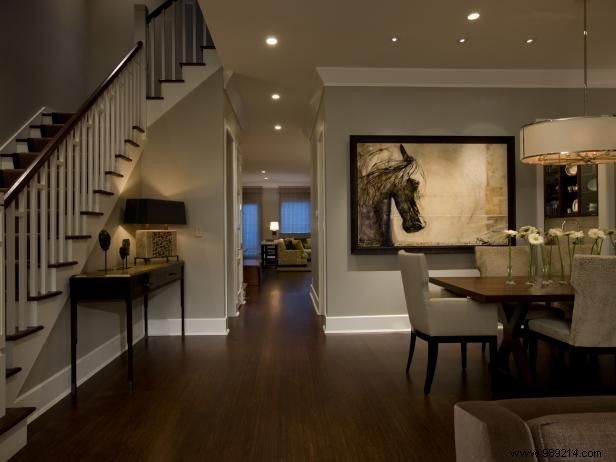
Scott Shigley
Oil paintings can be difficult to light due to the spectral reflections that are created when strong light is directed at the painting. A broad-based light source is best for lighting an oil painting.
Acrylic paints are not glossy and therefore do not have the glare problems associated with oil paintings or art framed under glass. Any type of light source can be used.
Reflection and glare are often problems with artwork that has been placed behind glass. Non-reflective glass and proper lighting placement can help resolve these issues.
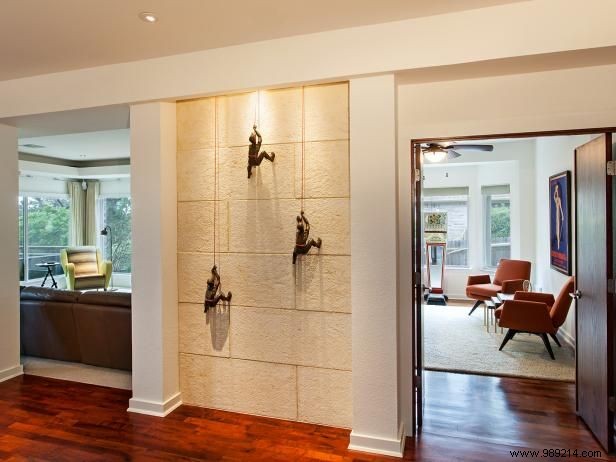
To bring out all dimensions, the sculpture is ideally lit from three different angles. Most of the sculptures, however, are illuminated by a single light source. The angle of the light is totally subjective to the piece. It can be best seen lit directly on the piece with a recessed light or from below or from the side to create the desired shadow effect.

Options for lighting a work of art depend on how the piece is framed.
An artwork or wall sculpture that does not have a frame can be illuminated by lighting that is not attached to the artwork, such as a mantel light, spotlight, track light, or recessed light.
Small frames cannot support an attached picture light. Power them as described above, with a fixture that isn't attached to the artwork.
A substantial frame can support the weight of an attached picture light. When choosing a picture light, consider the width and depth of the frame.
 From:Elinor Jones
From:Elinor Jones LED lights: LED lights are the best for displaying valuable works of art. They do not emit heat, they do not emit harmful ultraviolet rays or infrared light. LEDs cost more up front, but have a long lifespan and are energy efficient.
Incandescent lights: Standard incandescent bulbs create a warm color that brings out the yellows and reds in art while flattering the blues and greens.
Halogen lights: Halogens emit the purest white light, making them ideal for lighting most art. However, they do generate a lot of heat and should be placed far enough away so that the heat does not affect the artwork. If you are going to use halogen, consider putting a UV filter over the bulb.
Fluorescent lights: Fluorescent lighting distorts the color of artwork, and the high level of ultraviolet rays emitted by fluorescent lights damage artwork by causing accelerated fading. Fluorescents are not recommended to illuminate works of art.
Avoid putting the artwork in direct sunlight, ultraviolet rays can cause fading and discoloration.
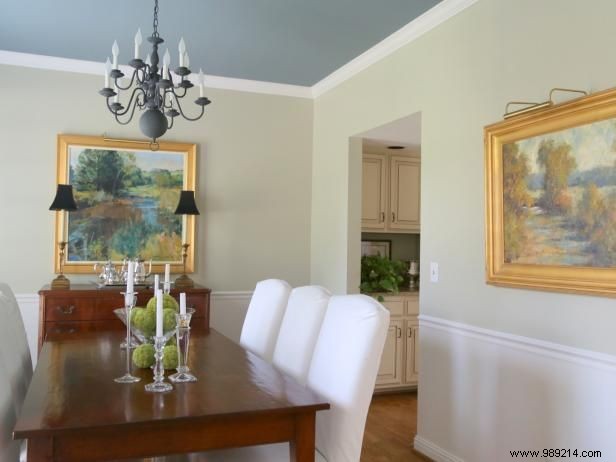
Kristie Barnett
Picture lights hang directly over a painting or are attached to the frame. A traditional picture light is approximately three inches in diameter and complements vintage and traditional artwork.
A slim picture light is smaller than a traditional picture light, about an inch in diameter, and works well with more contemporary pieces.
Picture lights are available in a variety of styles and finishes and come in lengths from 12 inches to 48 inches. Both traditional and slimline picture lights use incandescent bulbs, and some are battery-powered.
Mantel lights and spotlights are placed in front of the artwork and usually sit on a ledge or shelf. They illuminate the artwork from below and are less noticeable than a picture light.
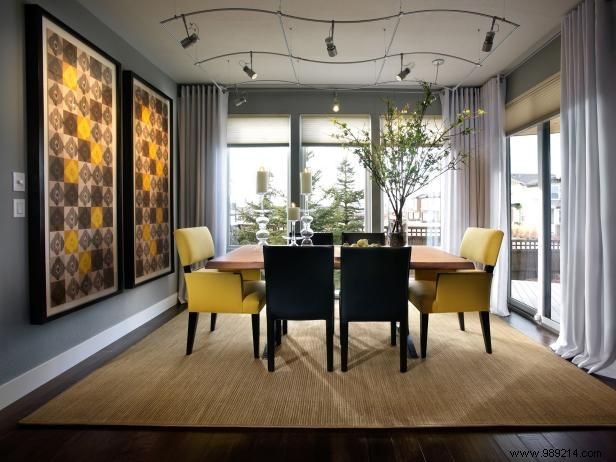
Eric
Track lighting is the most flexible way to light art. A track can contain multiple lights. Track lighting can be used to illuminate a wall evenly from floor to ceiling or to accent one or more works of art.
Recessed lights sit flush with the ceiling and are very subtle, but have a limited range of motion. Recessed lighting is commonly found in new homes, installed when homes are built.
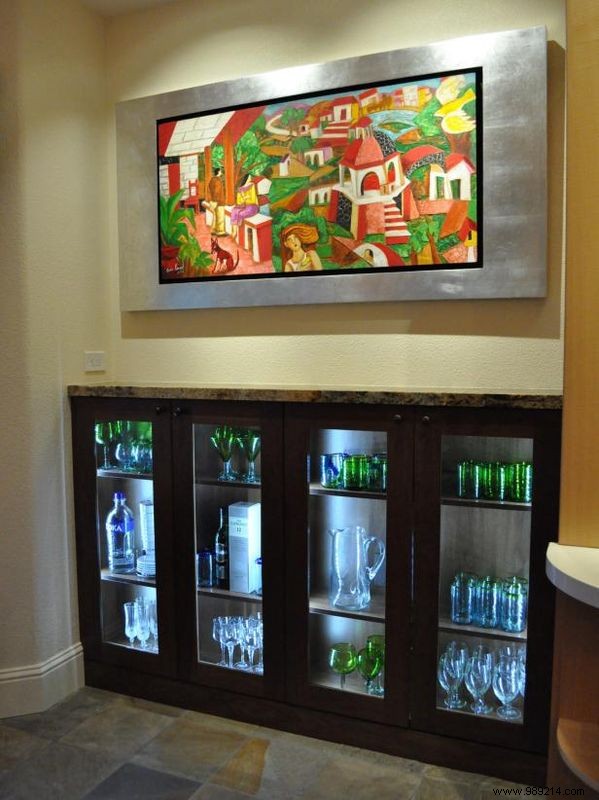 From:Nar Bustamante
From:Nar Bustamante Nar Fine Carpentry, Inc., Scripps Networks, LLC
Reduce glare: Position the light at a 30-degree angle to the artwork to minimize glare. Add 5 degrees to the angle for a larger frame, to avoid casting a shadow. Subtract five degrees from the position to accentuate the texture of a frame.
Avoid heat damage: Place lights far enough away from a painting to avoid potential heat damage. Heat can break down oil paints. Take special care when using hot halogen lights. To test the warmth of your lights, place your hand between the art and the light source. If you can feel the heat from the light, it could damage an oil painting.
Intensity: The general rule of thumb for accenting a piece of art is to light it three times as brightly as the rest of the room.

Lauri Levenfeld
Most homes are designed with a few built-in recessed lights, usually in high-visibility areas such as a fireplace. If your recessed lights aren't adequately lighting your artwork, you can solve the problem simply by adjusting the angle of the light or changing the bulb to achieve the desired effect.
Installing a picture light is a simple procedure, easily done by an owner. Installing track lights is a job best suited to a professional, but once the lighting is installed, it's easy for a homeowner to change track heads and the direction of the lights.